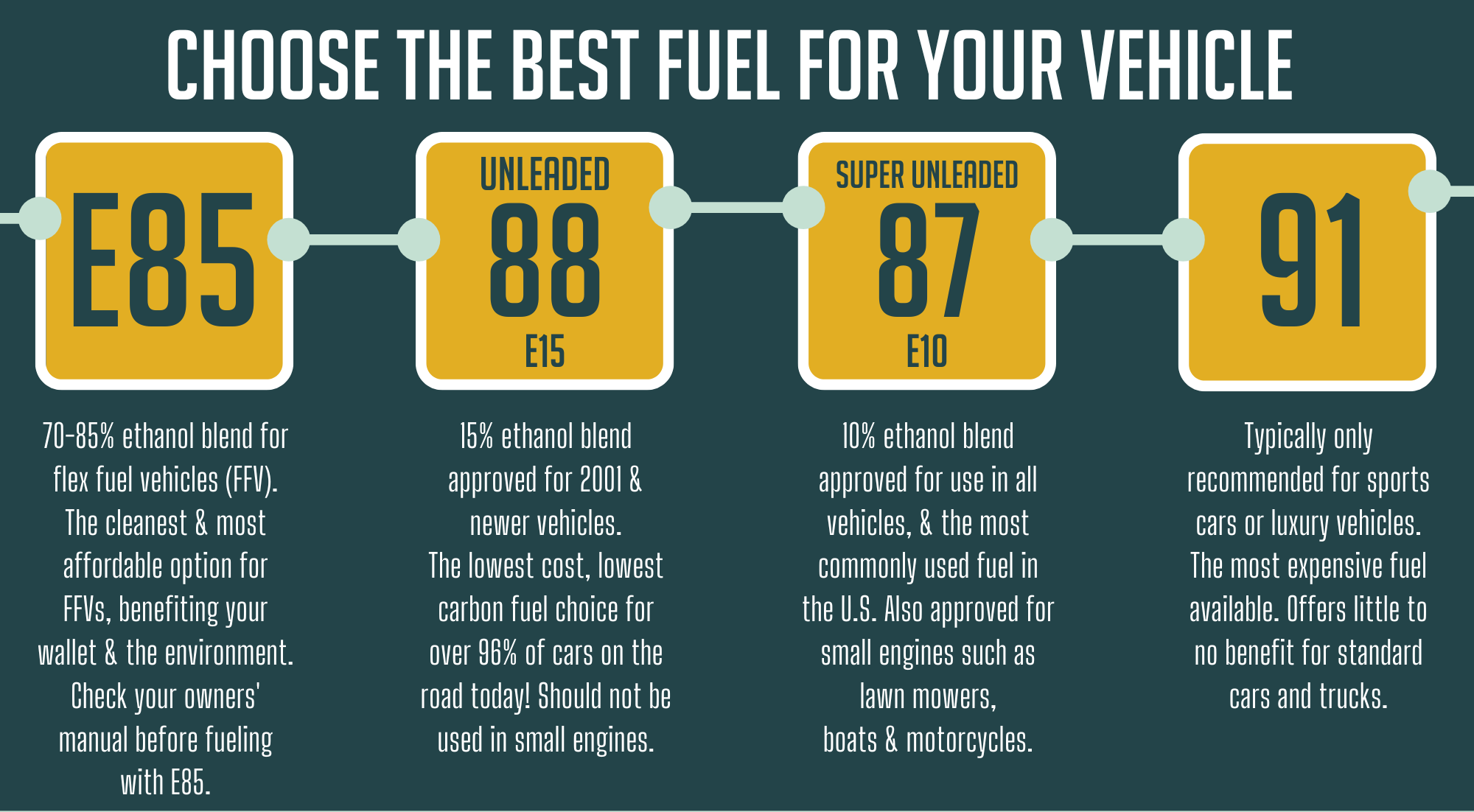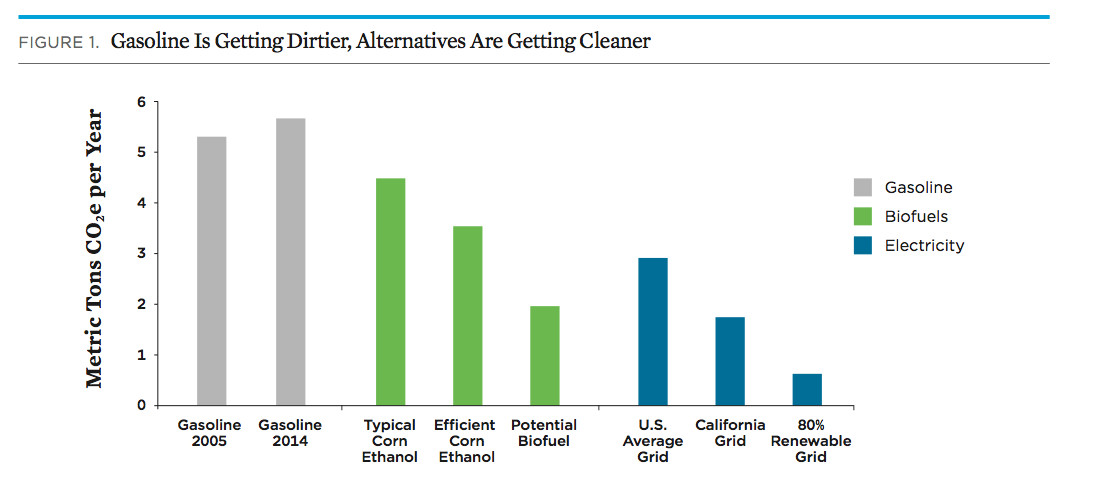E85, a blend of up to 85% ethanol with gasoline, is often promoted as a more environmentally friendly alternative to traditional gasoline.
But is using E85 actually better for the environment?
This article explores the key factors to consider.
Is E85 More Environmentally Friendly?

E85 can be more environmentally friendly than regular gasoline, but it depends on how sustainably the ethanol is produced.
The higher ethanol content reduces greenhouse gas emissions, but poorer fuel economy can offset the benefits.
E85 is not perfect, but does offer environmental advantages over traditional gasoline.
Key Points
- E85 reduces greenhouse gas emissions compared to regular gasoline
- E85 has lower emissions of some air pollutants
- Fuel economy and overall costs are drawbacks of E85
Our Opinion
In my view as an expert, E85 is a good transitional fuel that offers meaningful environmental benefits over gasoline.
However even better options exist, like renewable electricity for electric vehicles. I think E85 can play a role in reducing emissions today, but truly sustainable fuels will be needed long term.
What is E85 fuel?

E85 is a high-level ethanol-gasoline blend containing 51% to 83% ethanol, with the remaining portion being gasoline. Ethanol is a renewable fuel produced from corn and other plant materials. At low blend levels like E10 (10% ethanol), E85 can be used in conventional vehicles like gasoline-powered cars. But for optimal performance, E85 requires flex-fuel vehicles designed for higher ethanol blends.
The possible benefits of E85 include:
- E85 has lower evaporative emissions and is less volatile than gasoline
- Using ethanol displaces some petroleum-derived gasoline
- Ethanol production supports domestic agriculture
But E85 also has some downsides:
- E85 may deliver lower fuel economy and range compared to gasoline
- Producing ethanol can have environmental impacts
- E85 costs more per gallon than gasoline in most areas
Given these pros and cons, it’s not immediately clear whether E85 results in a net environmental benefit. The overall impact depends on how the ethanol is produced and used.
E85 Versus Gasoline Emissions

When used in flex-fuel vehicles, E85 can reduce some harmful tailpipe emissions compared to gasoline:
- Carbon monoxide emissions are 25-30% lower with E85.
- Nitrogen oxides are 10% lower with E85, which helps reduce smog formation.
- E85 emits fewer air toxics like benzene and 1,3-butadiene, which are found in gasoline exhaust.
However, E85 also has drawbacks regarding emissions:
- E85 vehicles often have higher evaporative emissions from fuel vapor venting.
- E85 produces similar or slightly higher carbon dioxide emissions per mile versus gasoline.
The most significant impact comes from the life cycle emissions of producing and transporting the fuel itself. Here, corn ethanol’s record is mixed:
- Growing corn and converting it to ethanol requires fossil fuels and can release greenhouse gases.
- However using biofuel displaces some petroleum use, which reduces lifecycle carbon emissions.
Whether E85 has lower overall GHG emissions depends on the efficiency of the specific ethanol production process. More efficient, lower-carbon ethanol can make E85 greener than gasoline.
E85 Production Carbon Footprint
The carbon footprint of producing E85 depends greatly on the specific methods used to grow the corn and convert it to ethanol. There are a few key factors:
- Corn production can involve significant fossil fuel use for machinery, fertilizers, and transportation. But agricultural practices are improving.
- Ethanol plants vary widely in energy efficiency and fuel sources. More modern plants using renewable power or waste heat produce lower carbon ethanol.
- Innovations like corn kernel fiber ethanol and cellulosic ethanol from crop residues can boost output while lowering emissions.
So the production carbon footprint of E85 is not set in stone. With more efficient farming methods and biofuel plants utilizing renewable energy, lifecycle emissions can be reduced significantly from older practices. Some ethanol today is close to carbon neutral.
But the reality is, much corn ethanol production still relies heavily on fossil fuels and has room for improvement. Policies that encourage lower-carbon production methods and feedstocks can help E85 live up to its promise as a more climate-friendly fuel.
E85 Engine Efficiency and Mpg
E85 contains less energy per gallon than gasoline, so fuel economy is reduced in vehicles not optimized for it. In standard gasoline engines, mpg drops by about 25-30% when using E85.
However, flex-fuel vehicles with optimized engines can match gasoline mpg. And turbocharged flex-fuel engines can achieve higher mpg on E85 than gasoline due to the fuel’s increased octane and cooling properties.
E85 also provides some efficiency advantages through greater torque and power in flex-fuel engines. This allows similar performance with smaller, more efficient engine designs.
So while E85 inherently contains less energy, proper flex-fuel vehicle engineering can close the mpg gap. The high-octane properties of ethanol open up performance optimization opportunities not possible with regular gasoline.
Is E85 Better for the Environment?
E85 is generally considered more environmentally friendly than gasoline due to its renewable ethanol content and lower tailpipe emissions.
Ethanol emits less greenhouse gases because it is plant-based. The feedstocks like corn and sugarcane absorb CO2 as they grow, offsetting emissions during fuel production.
E85 also burns cleaner than gasoline, producing less smog-forming pollutants like nitrogen oxides. Ethanol evaporates slower than gasoline, reducing harmful evaporative emissions.
However, the full environmental impact depends on how the ethanol is produced. Ethanol from corn may not offer net greenhouse gas reductions once fertilizer and distillation energy are factored in. But cellulosic ethanol from waste biomass is quite climate-friendly.
Overall, renewable E85 can provide meaningful reductions in lifecycle greenhouse gas emissions compared to gasoline. However the sustainability depends greatly on the ethanol feedstocks and production methods used.
FAQ
Is E85 Better for the Environment Than Regular Gas?
E85 can reduce greenhouse gas emissions compared to regular gasoline, especially when used in flex-fuel vehicles. However, E85 has some drawbacks like lower fuel economy that can offset environmental benefits.
Is E85 Safer for the Environment?
E85 is generally considered safer for the environment than regular gasoline because it contains a higher percentage of renewable ethanol. However, ethanol production can have negative environmental impacts if not done sustainably.
Is E85 More Sustainable?
E85 can be more sustainable if the ethanol is produced efficiently from renewable sources like corn stalks or switchgrass. But E85 is not inherently more sustainable than gasoline.
Why Is E85 Good for the Environment?
The main environmental benefit of E85 is reducing greenhouse gas emissions since the ethanol portion is renewable. E85 also has lower emissions of some air pollutants compared to regular gasoline.
Conclusion
While E85 has some drawbacks like lower fuel economy, it can provide meaningful reductions in greenhouse gas emissions compared to regular gasoline. E85 is generally considered more environmentally friendly, especially when produced sustainably and used in optimized flex-fuel vehicles. Overall, E85 is a promising eco-friendly alternative to traditional fossil fuels.
